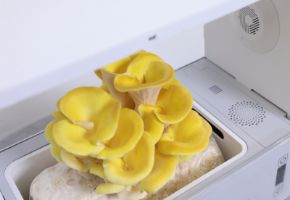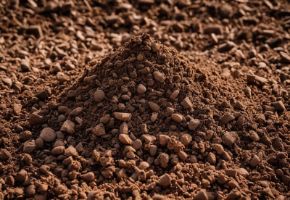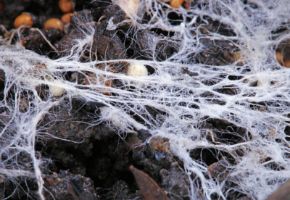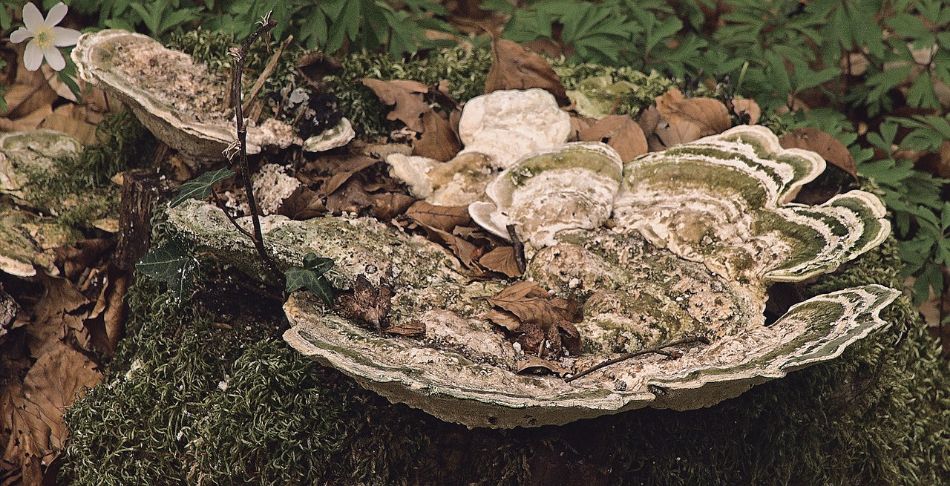Italy boasts one of the richest mycological traditions in the world, with fungal exhibitions that attract thousands of enthusiasts every year. But what truly makes these exhibitions special? Beyond the usual display of edible and poisonous species, many events surprise visitors with authentic rarities from the fungal world: from extremely rare bioluminescent mushrooms to fossil specimens, and species that grow only in specific microhabitats. In this comprehensive guide, we’ll take you on a journey to discover the most interesting exhibitions, focusing on the unique features that make them stand out in the national landscape.
The scientific and cultural importance of fungal exhibitions
Fungal exhibitions are not just displays but living archives of Italy’s fungal biodiversity. Every year, these events record important discoveries: in 2024 alone, seven new species were identified during regional exhibitions. But their value goes far beyond the scientific aspect...
A journey into hidden biodiversity
During the Trentino Mycological Exhibition in 2023, visitors had the chance to admire Entoloma nitidum, a mushroom so rare that it had been documented only twice in Italy in the last century. Events like these often represent the only opportunity to observe such species in person, otherwise preserved in university herbaria or visible only in specialized publications.
Preserving traditional knowledge
Many exhibitions, especially those organized in small mountain towns, safeguard a unique ethnomycological heritage. In Borgotaro (PR), during the historic exhibition of the IGP Porcini mushroom, traditional identification techniques dating back to the 19th century are passed down—methods long forgotten elsewhere.
A bridge between science and the public
The Trieste Mycological Exhibition has developed an innovative format where each mushroom is accompanied not only by a technical card but also by an "ecological story" explaining its role in the ecosystem. This narrative approach has increased youth participation by 40% compared to previous editions.
Northern Italy: alpine mushrooms and forest rarities
The regions of Northern Italy, with their variety of mountain and forest habitats, host some of the most species-rich fungal exhibitions. Here’s a selection of the most interesting ones, with a focus on their unique features.
Trentino-Alto Adige: the kingdom of alpine fungi
The Trento Mycological Exhibition, organized by the Bresadola Mycological Group, is famous for its section dedicated to high-altitude fungi. The 2024 edition featured the incredible Ophiocordyceps sinensis (the Himalayan "caterpillar fungus"), exceptionally found at 2,800 meters in the Dolomites. The exhibition also offers microscopy workshops to observe spores of extremely rare species.
Lombardy: the capital of wood-inhabiting fungi
The International Mushroom Exhibition of Milan boasts an extraordinary collection of wood-dwelling fungi, including the fascinating Hericium erinaceus (known as "lion’s mane") and the extremely rare Grifola frondosa weighing over 20 kg. For those interested in cultivating these species, we recommend our guide on how to grow mushrooms on wood.
Piedmont: the temple of rare truffles
In Alba (CN), alongside the famous Truffle Fair, a mycological exhibition takes place where a sensational discovery was presented in 2023: the winter truffle (Tuber brumale) with unique organoleptic characteristics, dubbed "Golden Brumale" by experts. The exhibition includes guided tastings highlighting the subtle differences between various truffle species.
Central Italy: mediterranean fungi and hidden treasures
The central regions of the peninsula offer exhibitions that combine tradition and surprising discoveries, with a special focus on thermophilic and Mediterranean species.
Tuscany: the charm of macchia fungi
The Florence Mushroom Exhibition amazes every year with its section dedicated to coastal fungi, including the elusive Lactarius tesquorum, which grows only in Mediterranean vegetation. The 2025 edition promises the display of a rare Boletus torosus found in Livorno’s pine forests—a species considered extinct in Tuscany for over 30 years.
Umbria: the paradise of hypogeous fungi
Gubbio hosts a unique exhibition specializing in underground fungi. In 2022, a record-sized specimen of Hydnotrya tulasnei (12 cm in diameter) was displayed—normally impossible to observe without digging. The exhibition includes demonstrations with dogs trained to find these hidden treasures.
Lazio: the fungi of the eternal city
Few know that Rome hosts an extraordinary variety of urban fungi. The exhibition at the Appia Antica Regional Park displays species growing among monuments, including a rare Coprinus romanus first identified among imperial ruins. To learn more about urban fungi, read our in-depth article on fungi in urban environments.
Southern Italy and islands: mediterranean wonders
The southern and island regions preserve a unique fungal biodiversity, with species not found elsewhere in Italy.
Calabria: the giants of Sila
The Sila Mycological Exhibition holds the Italian record for the largest Boletus aestivalis ever documented (3.2 kg). But the real attraction is the section dedicated to symbiotic fungi of ancient trees, including an extremely rare albino form of Amanita caesarea that grows only under centuries-old oaks.
Sicily: the fungi of the lava
The Etna Mycological Association organizes a one-of-a-kind exhibition dedicated to fungi colonizing Etna’s lava. Here, visitors can admire the mysterious Geopyxis vulcanalis, which grows only on lava substrates of specific composition, and the incredible Fomes fasciatus found at 2,500 meters above sea level.
Sardinia: treasures of the dunes
The Cagliari Exhibition boasts a unique collection of psammophilic fungi that grow among coastal dunes, including the fascinating Psathyrella ammophila, which changes color depending on humidity. The exhibition includes a reconstruction of their fragile dune habitat.
Special events and thematic exhibitions
Beyond traditional exhibitions, Italy hosts numerous thematic events delving into specific aspects of the fungal world.
The bioluminescent fungi of Arcugnano (VI)
The nocturnal exhibition of glowing fungi is a unique event in Europe. In a darkened chamber, species like Mycena lux-coeli and the extremely rare Italian Panellus stipticus are displayed, showcasing particularly intense bioluminescence. The 2024 event was sold out for five consecutive days.
The fossil fungi of Bolzano
The South Tyrol Museum of Natural History organizes a biennial exhibition of fossil fungi from the Dolomites, including impressive specimens of Prototaxites dating back 400 million years. The 2025 edition will feature a new discovery: fungal imprints in amber with inclusions of extinct insects.
Medicinal mushroom exhibition in Turin
The Piedmont Fungarium dedicates an entire section to the therapeutic properties of fungi, featuring rare extracts like Ganoderma lucidum cultivated on ancient oaks. To explore this topic further, don’t miss our article on scientific studies on medicinal mushrooms.
Tips for making the most of fungal exhibitions
To turn a simple visit into an unforgettable experience, here are some suggestions based on years of expertise:
Perfect timing
The best hours to visit are usually early in the morning when the displayed fungi are freshest and most vibrant. Many exhibitions organize special guided tours with mycologists during the first two hours of opening.
What to bring
Besides a camera, we recommend bringing a notebook: many exhibitors share valuable insights not found in books. Some exhibitions allow the use of special magnifying lenses to observe microscopic details.
How to behave
Always ask before photographing: some rare fungi are sensitive to flash. Actively participate in identification sessions, where you can bring your own finds for free expert analysis.
Fungi: a heritage to discover
Italy’s mycological exhibitions represent a unique global heritage of knowledge and biodiversity. From alpine rarities to the fungi of Etna’s lava, each exhibition tells a different story about the complex relationship between fungi and their environment. Now that you know where to find fungal exhibitions in Italy and what makes them special, all that’s left is to plan your personal mycological tour.
The fungal kingdom is a universe in continuous evolution, with new scientific discoveries emerging every year about their extraordinary benefits for gut health and overall well-being. From now on, when you see a mushroom, you will no longer think only of its taste or appearance, but of all the therapeutic potential it holds in its fibers and bioactive compounds. ✉️ Stay connected - Subscribe to our newsletter to receive the latest studies on: Nature offers us extraordinary tools to take care of our health. Fungi, with their unique balance between nutrition and medicine, represent a fascinating frontier we are only beginning to explore. Continue to follow us to discover how these extraordinary organisms can transform your approach to well-being.Continue your journey into the world of fungi










